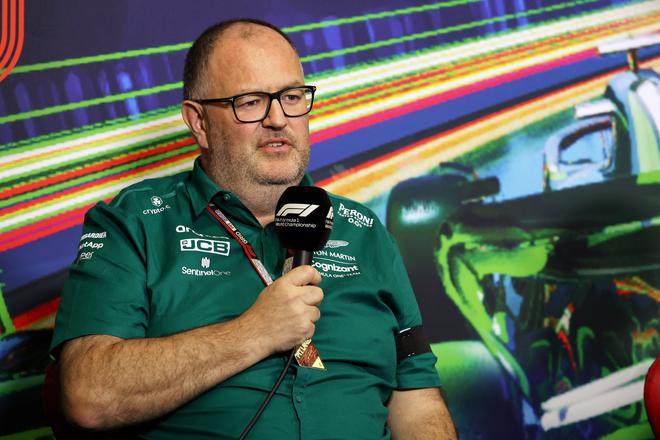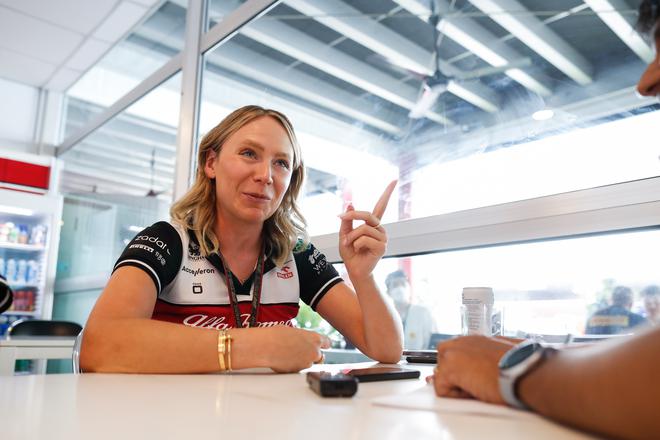

After the first three races this year, Charles Leclerc held a significant lead over title rival Max Verstappen. The Ferrari driver had won two races and finished second in the other whereas Verstappen had retired from two.
Leclerc’s campaign, however, faltered after that because of a combination of factors. Verstappen, on the other hand, is on the verge of sealing his second drivers’ championship.
While reliability issues and his own errors have contributed to Leclerc’s challenge fizzling out, Ferrari’s strategic blunders cost him near certain wins in Monaco, Silverstone and even in Hungary to an extent.
Although Ferrari’s calls in those races baffled fans and experts, it must be stressed that strategic decisions in a Formula One setting are far more complex than just what happens in those 90 minutes on a Sunday.
During the Singapore Grand Prix weekend, The Hindu caught up with two experts in the field of race strategy to demystify the art and learn how teams prepare for various scenarios.
“In its simplest form, strategy is very simple, when you say to yourself, how long is the race and what is the fastest way from A to B, [taking into account] tyre life, degradation, pace between the compounds and pit loss. Theoretically, it is very simple,” says Tom McCullough, performance director at Aston Martin F1 team.
Dealing with complexity
“What a strategist needs to do is work very closely with the tyre engineers, race engineers, very close with the drivers and anyone with some input at a senior level, to have role-played as many scenarios as possible that could happen. They need to be good with data and tools and processing stuff, but the hardest bit to teach strategy engineers is what to do when it goes off plan, how to react,” he adds.
To be in a good position to react, a strategy team starts its work well ahead of the race. Tyres figure prominently in the analysis.
“Strategy nowadays starts a good couple of weeks before the start of the race,” says Ruth Buscombe, head of strategy at Alfa Romeo Sauber F1 team. “Our first decision is to decide which compounds they want to use in which sessions. Do we want to get rid of some of the race tyres because it’s more of a qualifying track or do we need to keep those tyres because it’s important to have them on Sunday for the race? So all that work goes on in the background.”
About 20 years ago, strategy was decided by the race engineers; but now it has become a specialised department comprising members with a strong core in mathematics, physics or engineering and an aptitude for coding and running simulations. The focus is on the team but the strategy department also analyses competitors, chiefly to gain an understanding of the tyres.
Back when refuelling was in place, strategy was dependent on how long a car could run before pitting because it was quicker when it was at its lightest, carrying the least fuel. The tyres back then were hard and a lot more durable, and not as big a factor.
Currently, pit stops are the quickest they have ever been because only the tyres are changed. Buscombe says this has made strategy more interesting, despite there being one less variable in the equation; the different tyre compounds with higher degradation than before make for an eclectic mix of strategies.
Proving their worth
While the impact of strategy calls during a regular dry weekend is marginal, affecting only a few positions, a strategist can make a huge difference when another variable, such as rain, enters the picture.
“When you’re making a strategic decision, you’re normally gambling for one or two positions maximum,” Buscombe explains. “Now in rain, if you get it wrong, you can lose a million minutes. We are talking about hundredths of a second per lap degradation on a medium compound [in dry weather]. So one lap later, I’m going five hundredths slower than the previous lap. Whereas [when it rains], if you are the first chap on intermediate tyres you can go six seconds faster. That’s a thousand times more. It is where you can make more of a difference as a team on the operational side.”
Even in a dynamic setting where it starts raining, preparation plays a key role in executing a flawless strategy.
“It is like NASA or the air force, where you have procedures in place and you know how you deal with a crisis,” Buscombe says. “So you follow a process and most teams have flow charts of ‘what happens if it starts raining, who do we then speak to? We get feedback from the driver and then we do this’. We practise these routines, so even if we’re not in these exact situations, we are ready.”
A modern F1 team uses a lot of software tools, some built in-house, some purchased, to model situations and run simulations. And yet, teams do get things wrong, especially when certain decisions have to be made on the fly.
Asked why this happens, McCullough says, “Well, all of these tools are only as good as the information you’re feeding them. So you still rely a lot on people with good situational awareness to look at the tools, step back and look at what’s happening and listen to your drivers. Having that dialogue between the key stakeholders who understand the tyres, strategy, set-up and driver, is key. You have to be able to react… because if you just stick to a plan, it invariably will go wrong.”
An element that plays a significant role is the feedback from the driver and the trust that flows both ways. “Safety comes first. So in wet conditions, the driver gets a say on whether it is too wet for slicks. It doesn’t matter if I say it is faster,” says Buscombe.
“During the set-up briefing, we say our baseline for Sunday is this strategy for the weekend but that will depend on how the tyres work and the important thing to do in practice is to evaluate the tyres,” explains McCullough. “Then after qualifying, once we have gone through the data, we sit down again and see if we need to change things from what was discussed on Thursday. If you can get a driver engaged in understanding what the plan is, he can help you so much more. So a lot of it is building the picture beforehand.
“We then rely on the feedback from the driver and they are useful tools to see if we are on plan for this or not. What the driver can’t see is the pitstop windows if he wants to stop and that is the information we need to give feedback on.”
Where Red Bull and Verstappen have got a lot of this right, Ferrari and Leclerc haven’t. They will need to repair the trust that has been lost because of some strategic decisions which have left the driver looking baffled and the team seeming reactive and panicky. While there is no doubt that Verstappen has been exceptional on the track, the title race has also been shaped by what has happened off it, illustrating just how important race strategy is in F1.




!["[T]he First and Fifth Amendments Require ICE to Provide Information About the Whereabouts of a Detained Person"](https://images.inkl.com/s3/publisher/cover/212/reason-cover.png?w=600)


